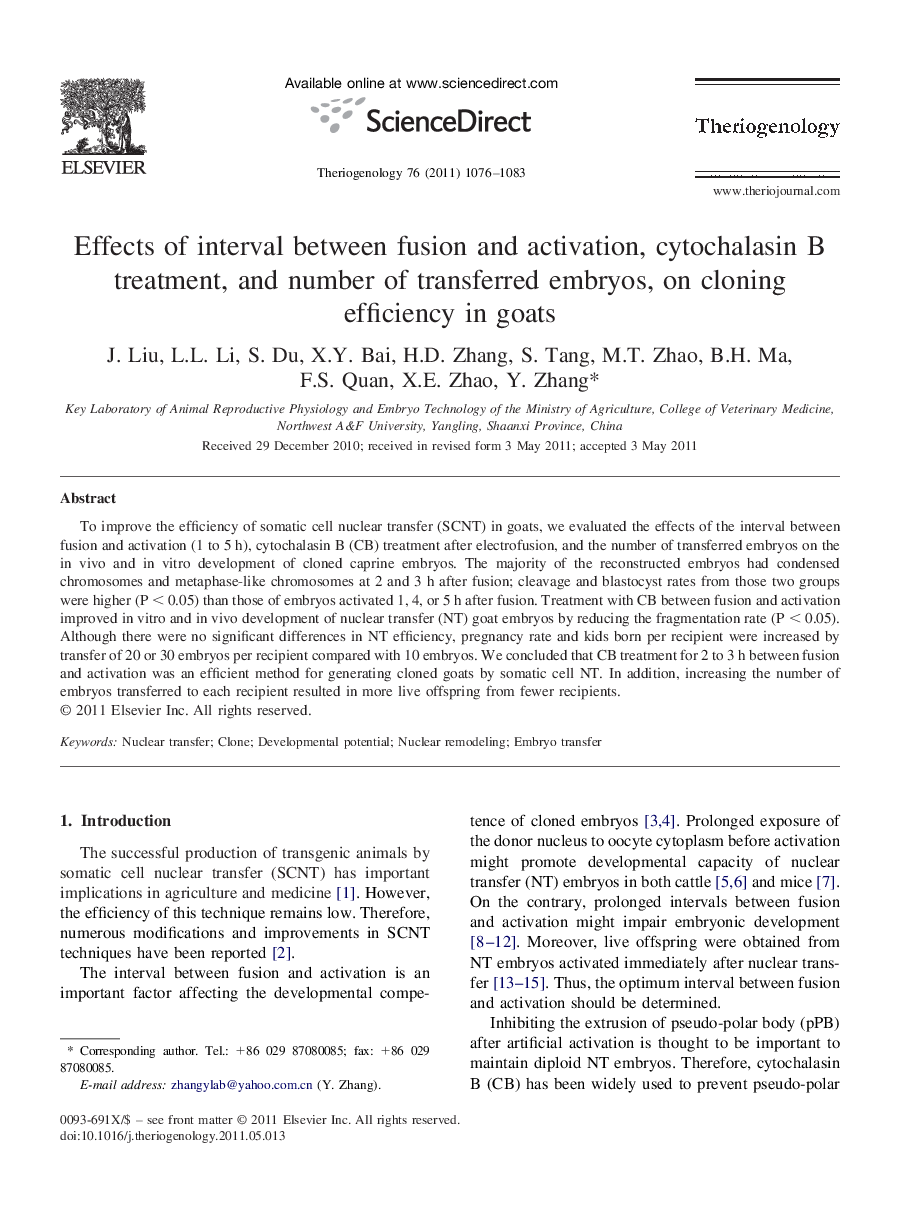| کد مقاله | کد نشریه | سال انتشار | مقاله انگلیسی | نسخه تمام متن |
|---|---|---|---|---|
| 10892599 | 1082110 | 2011 | 8 صفحه PDF | دانلود رایگان |
عنوان انگلیسی مقاله ISI
Effects of interval between fusion and activation, cytochalasin B treatment, and number of transferred embryos, on cloning efficiency in goats
دانلود مقاله + سفارش ترجمه
دانلود مقاله ISI انگلیسی
رایگان برای ایرانیان
کلمات کلیدی
موضوعات مرتبط
علوم زیستی و بیوفناوری
علوم کشاورزی و بیولوژیک
علوم دامی و جانورشناسی
پیش نمایش صفحه اول مقاله

چکیده انگلیسی
To improve the efficiency of somatic cell nuclear transfer (SCNT) in goats, we evaluated the effects of the interval between fusion and activation (1 to 5 h), cytochalasin B (CB) treatment after electrofusion, and the number of transferred embryos on the in vivo and in vitro development of cloned caprine embryos. The majority of the reconstructed embryos had condensed chromosomes and metaphase-like chromosomes at 2 and 3 h after fusion; cleavage and blastocyst rates from those two groups were higher (P < 0.05) than those of embryos activated 1, 4, or 5 h after fusion. Treatment with CB between fusion and activation improved in vitro and in vivo development of nuclear transfer (NT) goat embryos by reducing the fragmentation rate (P < 0.05). Although there were no significant differences in NT efficiency, pregnancy rate and kids born per recipient were increased by transfer of 20 or 30 embryos per recipient compared with 10 embryos. We concluded that CB treatment for 2 to 3 h between fusion and activation was an efficient method for generating cloned goats by somatic cell NT. In addition, increasing the number of embryos transferred to each recipient resulted in more live offspring from fewer recipients.
ناشر
Database: Elsevier - ScienceDirect (ساینس دایرکت)
Journal: Theriogenology - Volume 76, Issue 6, 1 October 2011, Pages 1076-1083
Journal: Theriogenology - Volume 76, Issue 6, 1 October 2011, Pages 1076-1083
نویسندگان
J. Liu, L.L. Li, S. Du, X.Y. Bai, H.D. Zhang, S. Tang, M.T. Zhao, B.H. Ma, F.S. Quan, X.E. Zhao, Y. Zhang,